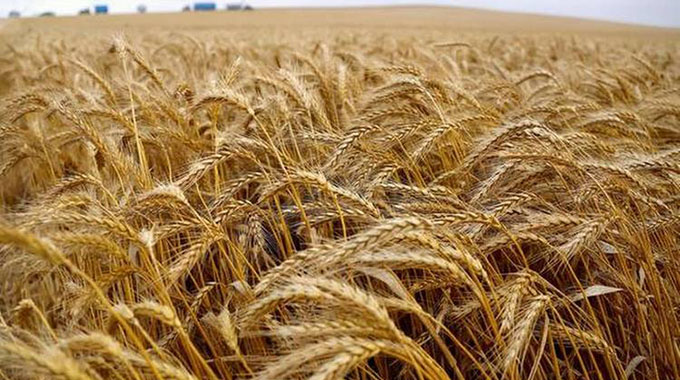Editorial Comment: National effort in place to ensure enough food

While Zimbabwe will make sure that no one goes hungry as a result of the El Niño drought we are now experiencing, the Government wants the private sector to step up to the mark and do its share, especially with the income earners, while the Government handles the vulnerable.
The Cabinet had detailed discussions on Tuesday on how to make sure there will be enough food, both nationally and for the vulnerable, regardless of the impact of the drought on the current season.
Presently, no detailed predictions are possible, but the Government wants to be prepared and has approved a swathe of measures, while there is still plenty of time to make sure there is enough food and that those who need it get it.
For a start, and this is where the private sector is expected to step in, imports of maize, rice, potato seed, cooking oil and where necessary genetically modified maize for stockfeeds can be imported duty free.
At the same time, the cost of living is being contained by a decision that rice and potato seed, which were supposed to attract the full valued added tax, will continue to be exempted considering the rising contribution they are making to Zimbabwean diets.
Normally genetically modified maize cannot be imported to avoid potential contamination if someone plants the seed. But the whole grain has been imported before under conditions that worked, the controls ensuring that importers act responsibly and process the grain before distributing it and selling it, in this case for stockfeeds.
We do not see any serious problem in milling such grain for ordinary consumption, although packets would have to be properly labelled so consumers could make their own choices.
More and more of the world’s maize is genetically modified but as long as Zimbabwe knows what has been modified people can choose. For the moment the ban on growing modified seed should remain.
Most of the dams are fairly full, despite the drought, and so there is enough water for the full irrigation of the winter wheat crop, with plans being made by Government and farmers to grow the same surplus we grew last year.
Cabinet has some good ideas on how to use that surplus.
There is a possibility that some of the wheat could be eaten in the same way as other grains, although there are some flour-based foods such as pasta that are already in many diets.
Zimbabwe will also be looking at the possibility of swapping the surplus wheat for maize.
As one of the two African countries self-sufficient in wheat, the other being Ethiopia, we may well find an African maize producer outside the drought belt with a surplus who needs to import wheat, and a deal then becomes possible.
El Niños tend to produce droughts in some areas and above average rainfall in others.
One possibility of longer term planning might be to establish links with East African producers and check the links in weather patterns.
There have been at least some El Nino years that see better rain in East Africa and drought in the south, while La Nina years have produced, at least on occasion, the opposite. If that can be confirmed then there appears to be a potential trade link.
The Government is now becoming increasingly interested in seeing rice production take off in Zimbabwe. A lot of rice is grown in West Africa, but not much in the rest of the continent, although demand for this grain is growing.
There are two main rice species, Asian rice, which dominates production and markets, and African rice which can cope with a lot of the problems African crops can face.
There are advantages to both. Recently work has been done to create hybrids that combine the positives of both.
Japanese experts have been suggesting that Zimbabwe could try out these hybrids. While rice will almost certainly need some irrigation, this does not have to be flood irrigation for quite a few varieties so it is a practical possibility. Perhaps some of the Lowveld irrigated areas would be suitable.
Zimbabwe has already been diversifying its grain production. Traditional grains have been getting far more emphasis in recent years, and it will be important to see what sort of harvests of these grains are obtained in a drought year.
Traditional grains were the staple diet right up into the 1920s, around 100 years ago, with maize just being a summer vegetable crop as green maize. So we ought to be eating more.
If we can grow rice as well then we could expand and diversify our diet for many people and have people eating more than one kind of grain and in fact choosing foods processed from the full range of maize, several kinds of traditional grain, wheat and rice.
This would probably give us healthier lifestyles, more interesting kitchens, more secure food supplies, and farmers moving faster into prosperity.
As always, we must learn from stresses and challenges. This season will tell our experts what works, what successes we must exploit and what changes we must make.
In recent years we have been pushing research, helping our farmers and building up our resilience.
But bad years can teach as much as good years, and we need to learn from both to make good years better and bad years easier to cope with.









Comments